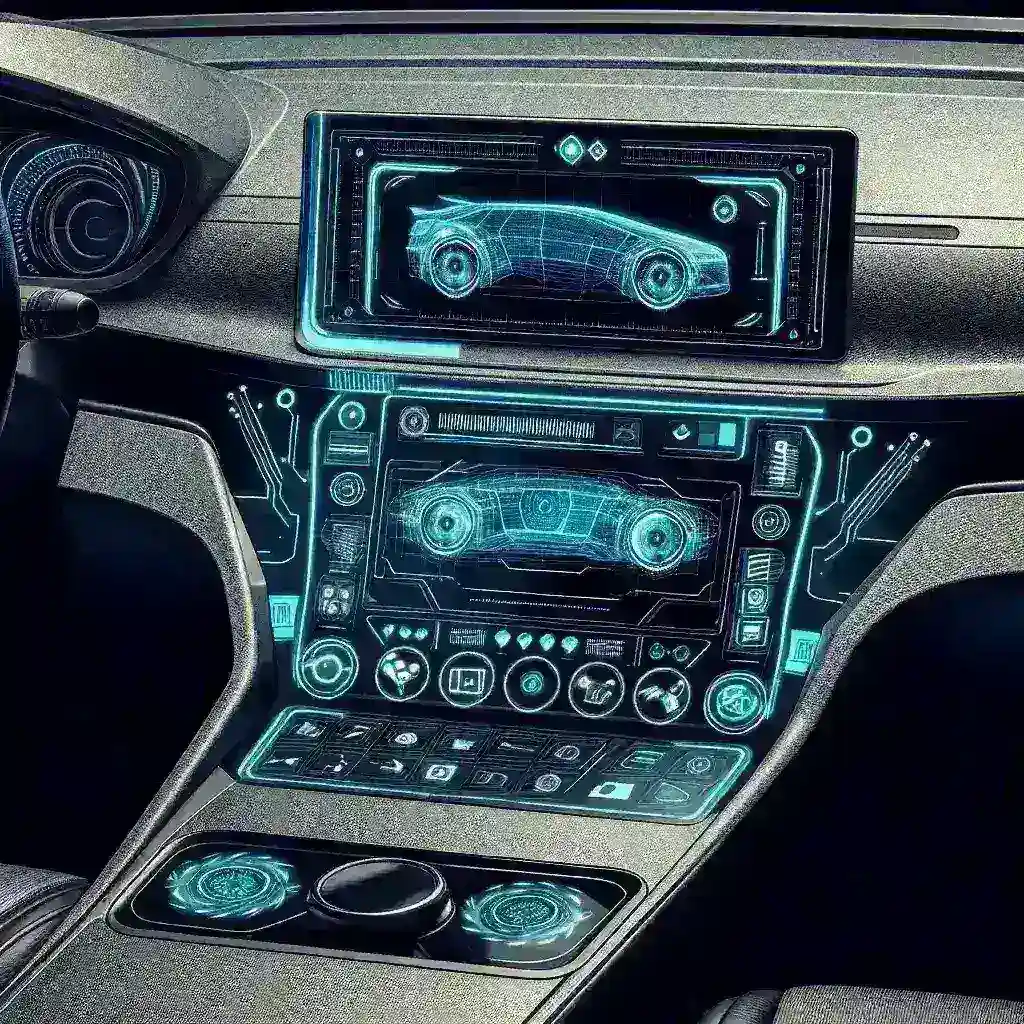Samsung Unveils a Game-Changing Foldable Display Prototype for Automotive Dashboards
In a groundbreaking move that has the potential to redefine the future of automotive dashboards, Samsung has debuted its foldable display prototype. This cutting-edge technology promises to not only enhance user experience but also transform the aesthetics of vehicle interiors. With a commitment to innovation, Samsung is once again at the forefront of technological advancements in the automotive sector.
The Evolution of Automotive Displays
Historically, automotive dashboards have been relatively static, featuring conventional displays that lack versatility and adaptability. However, as vehicles have evolved, so too have their displays. The integration of digital interfaces has led to an increased emphasis on functionality and user engagement. Samsung’s foldable display serves as a testament to this evolution, offering a multitude of benefits over traditional dashboard designs.
What is Samsung’s Foldable Display Prototype?
The foldable display prototype introduced by Samsung is designed to provide a flexible, high-resolution screen that can bend and adjust according to user needs. This prototype can be seamlessly integrated into various vehicle designs, allowing for a more streamlined and modern look. Key features include:
- Flexibility: The ability to bend and fold makes it suitable for various dashboard configurations.
- High Resolution: The display boasts exceptional clarity and color accuracy, enhancing the overall driving experience.
- User Customization: Drivers can personalize their interface, selecting what information is displayed and how.
- Durability: Built with robust materials, the display is designed to withstand the rigors of daily use in a vehicle.
Benefits of Foldable Displays in Automobiles
As we transition into the future of driving and vehicle technology, the advantages of foldable displays become increasingly apparent:
1. Enhanced User Experience
Foldable displays can provide a more immersive experience for drivers and passengers alike. By allowing for customizable layouts, users can prioritize the information they deem most important, leading to safer and more efficient driving.
2. Maximizing Space
In compact vehicles, space is often at a premium. A foldable display can help maximize available dashboard space, offering a sleek design that doesn’t compromise on functionality. This allows for other components, such as storage or additional instrumentation, to coexist without cluttering the dashboard.
3. Aesthetic Appeal
The sleek look of a foldable display can significantly enhance the aesthetic appeal of a vehicle’s interior. With the ability to integrate smoothly into existing designs, manufacturers can create modern and stylish interiors that attract consumers.
Comparative Analysis: Traditional vs. Foldable Displays
To better understand the impact of Samsung’s innovation, it’s essential to compare traditional automotive displays with foldable ones:
| Feature | Traditional Displays | Foldable Displays |
|---|---|---|
| Flexibility | Static, fixed size | Adjustable, can fold |
| Customization | Limited options | Highly customizable |
| Space Efficiency | Often bulky | Streamlined design |
| User Interaction | Basic touch functionality | Advanced touch and gesture controls |
Future Predictions for Automotive Displays
As we look ahead, the adoption of foldable displays in automotive design is expected to usher in a new era of interactivity. Predictions suggest that:
- The market for flexible displays will grow exponentially as more manufacturers embrace this technology.
- Integration with advanced driver assistance systems (ADAS) will become standard, improving safety and usability.
- Augmented reality (AR) features will be more prevalent, providing drivers with real-time data overlays directly on their dashboards.
The Cultural Relevance of Technology in Vehicles
In today’s world, technology is not just an accessory; it is a fundamental part of our daily lives. Young consumers, in particular, expect their vehicles to reflect the same level of technological sophistication as their smartphones and tablets. Samsung’s foldable display prototype meets this expectation, signifying a cultural shift toward smarter, more integrated automotive technology.
Expert Insights on Foldable Technology
Industry experts have weighed in on the potential of foldable technology within the automotive sector. According to Dr. Jane Smith, a leading automotive technology analyst, “The introduction of foldable displays is a significant breakthrough. It represents not just a new product but a shift in how we perceive and interact with our vehicles.”
Real-World Applications and Examples
While the prototype is still in development, various automakers are already exploring potential applications. For instance, luxury car manufacturers are keen on integrating foldable displays into their high-end models, enhancing the overall user experience.
Challenges and Considerations
Despite the excitement surrounding this innovation, there are challenges that manufacturers must address:
- Cost of Production: Foldable displays may be more expensive to produce, impacting the final cost of vehicles.
- Durability Concerns: Ensuring that the display can withstand environmental factors such as heat, cold, and moisture is crucial.
- Integration with Existing Systems: Manufacturers must ensure compatibility with current vehicle technologies.
Conclusion: The Future is Foldable
Samsung’s foldable display prototype for automotive dashboards is a remarkable innovation that holds the promise of transforming how we interact with our vehicles. With its array of benefits, from enhanced user experience to aesthetic appeal, it paves the way for a future where flexibility and customization are at the forefront of automotive design. As the automotive industry continues to evolve, keeping an eye on such innovations will be essential for both manufacturers and consumers alike.



